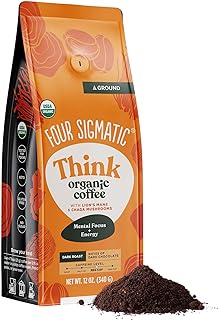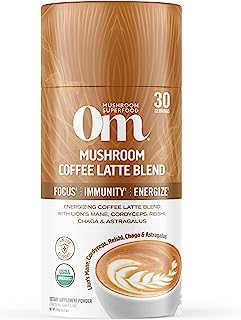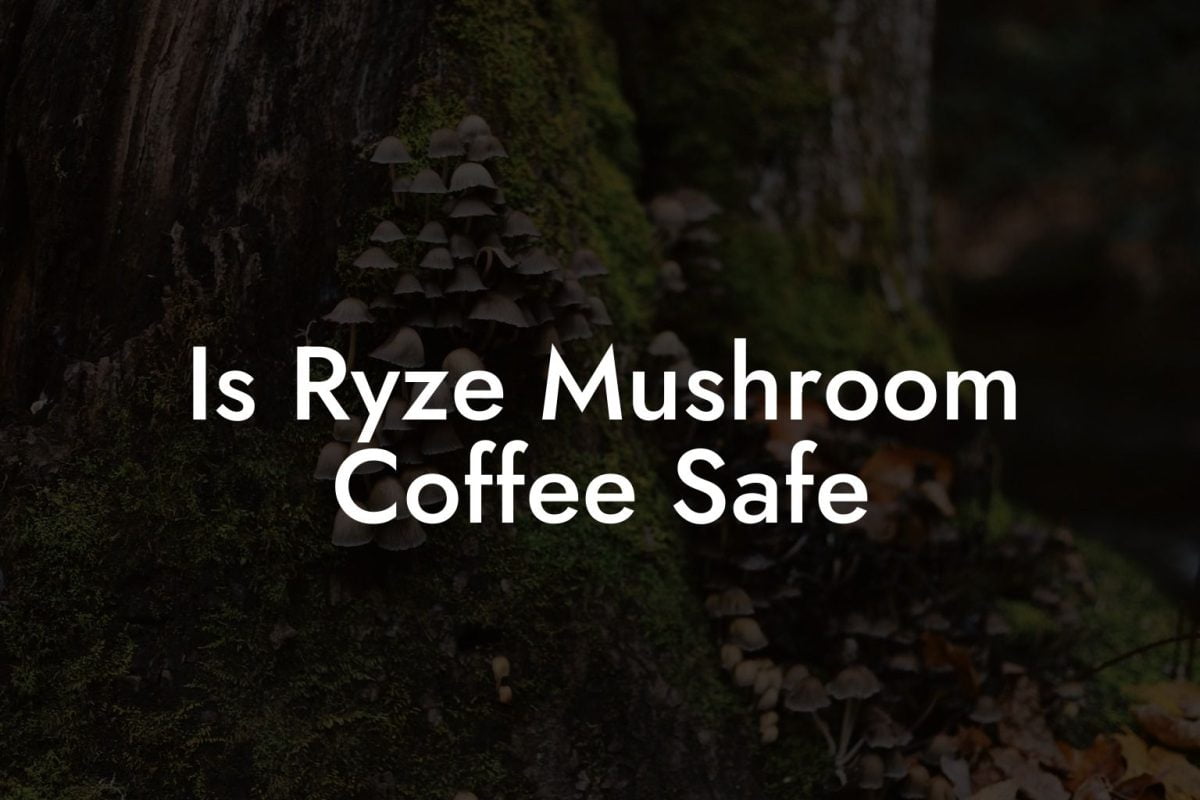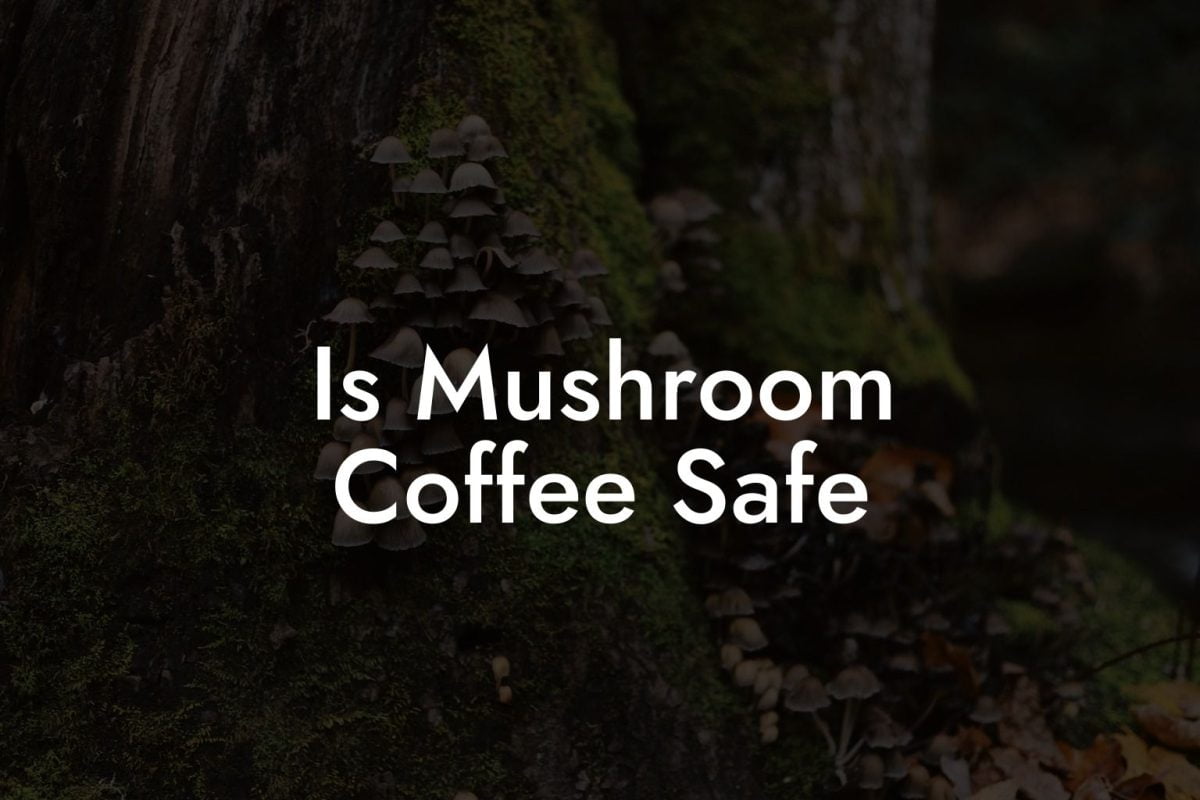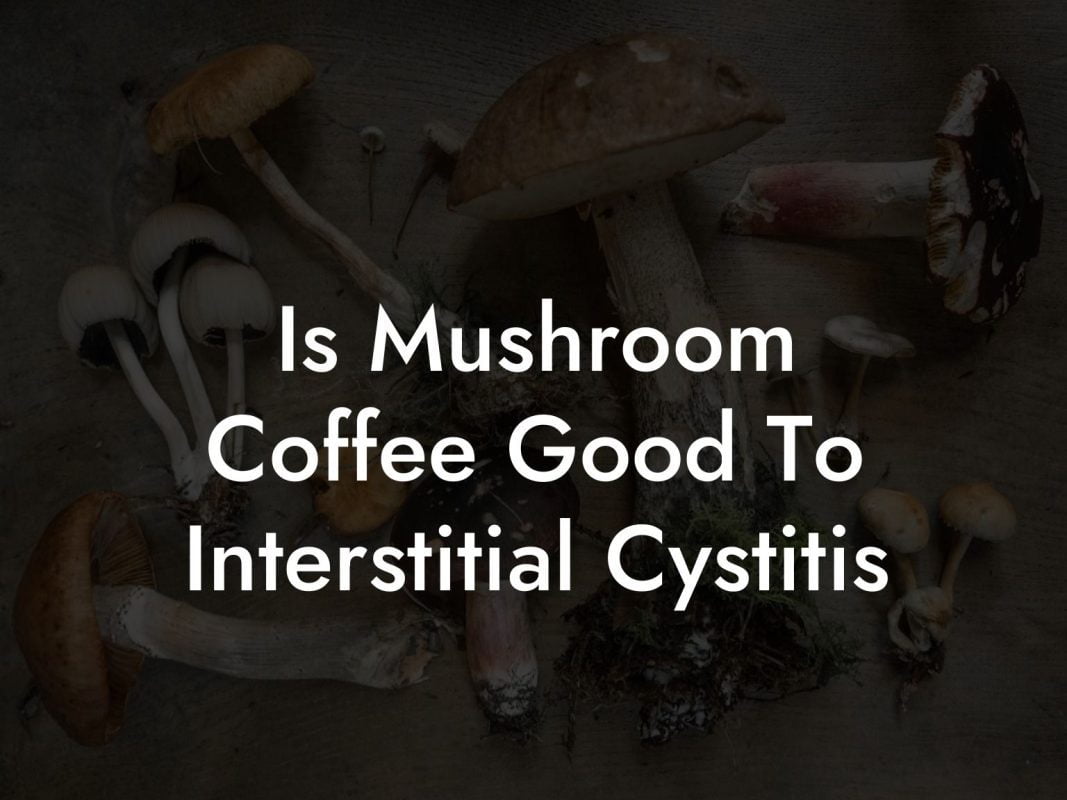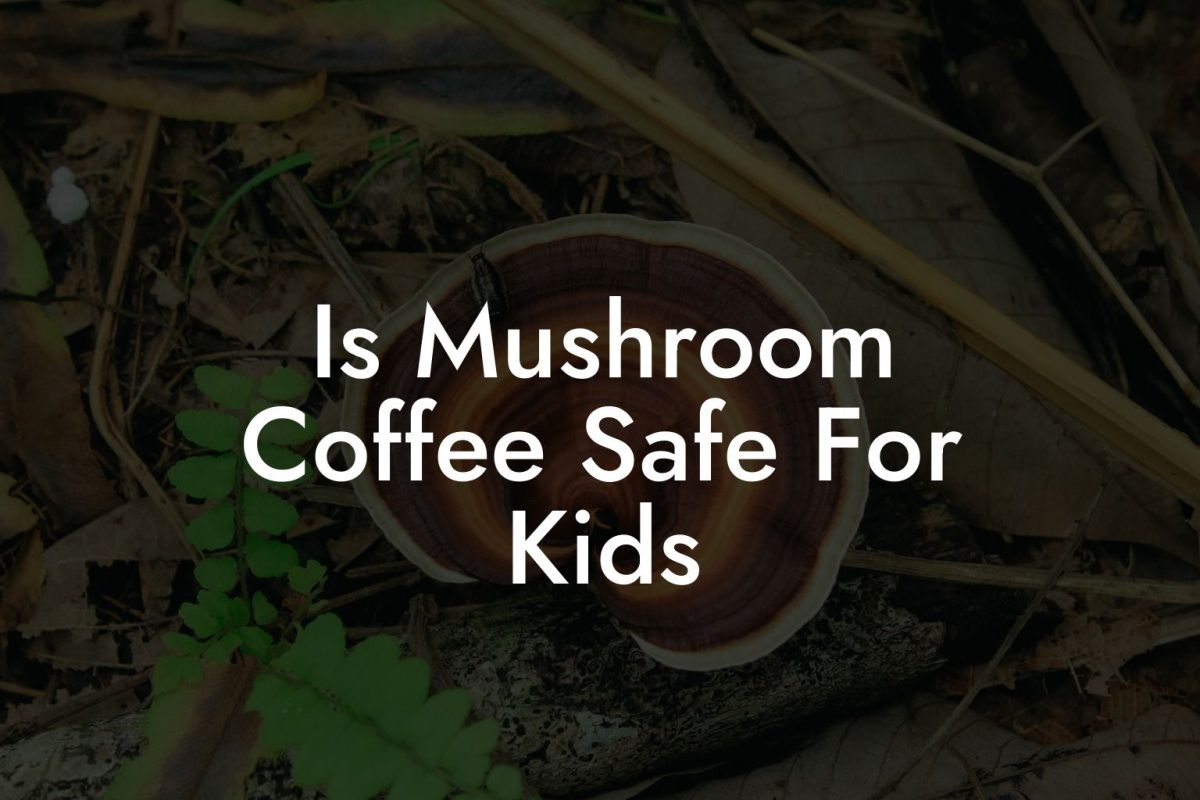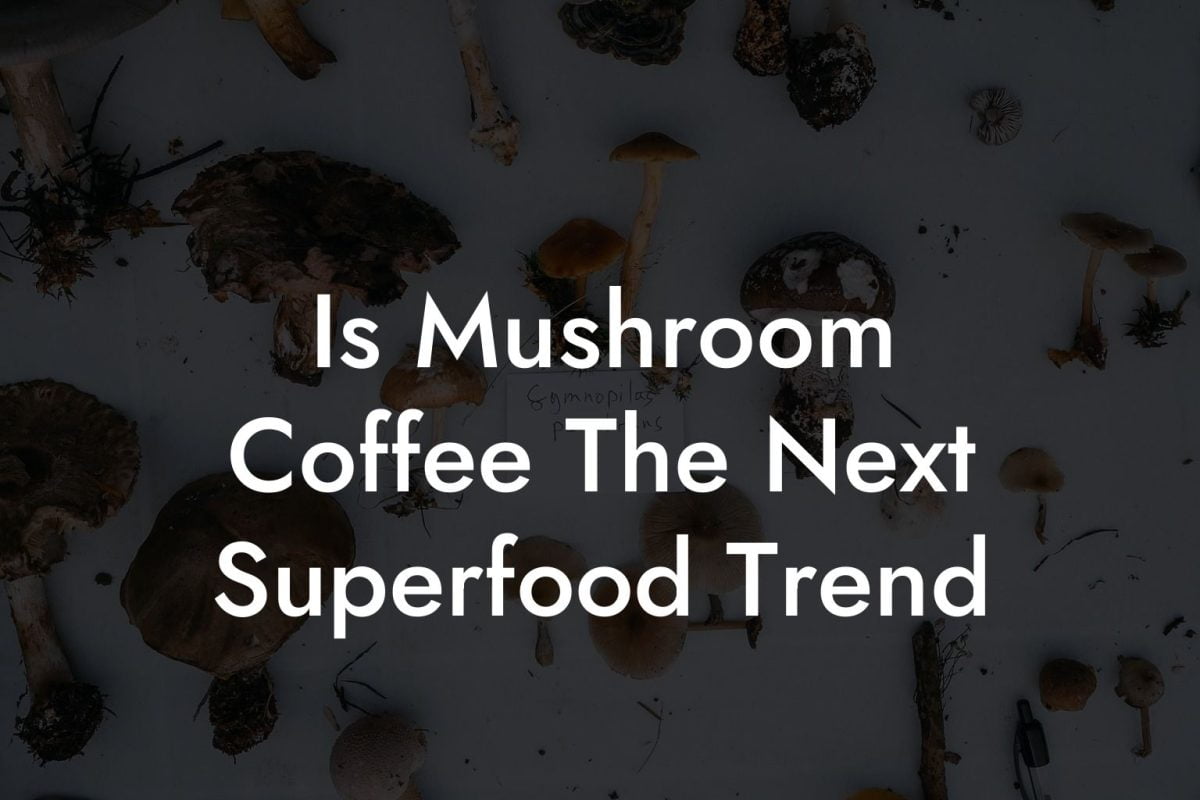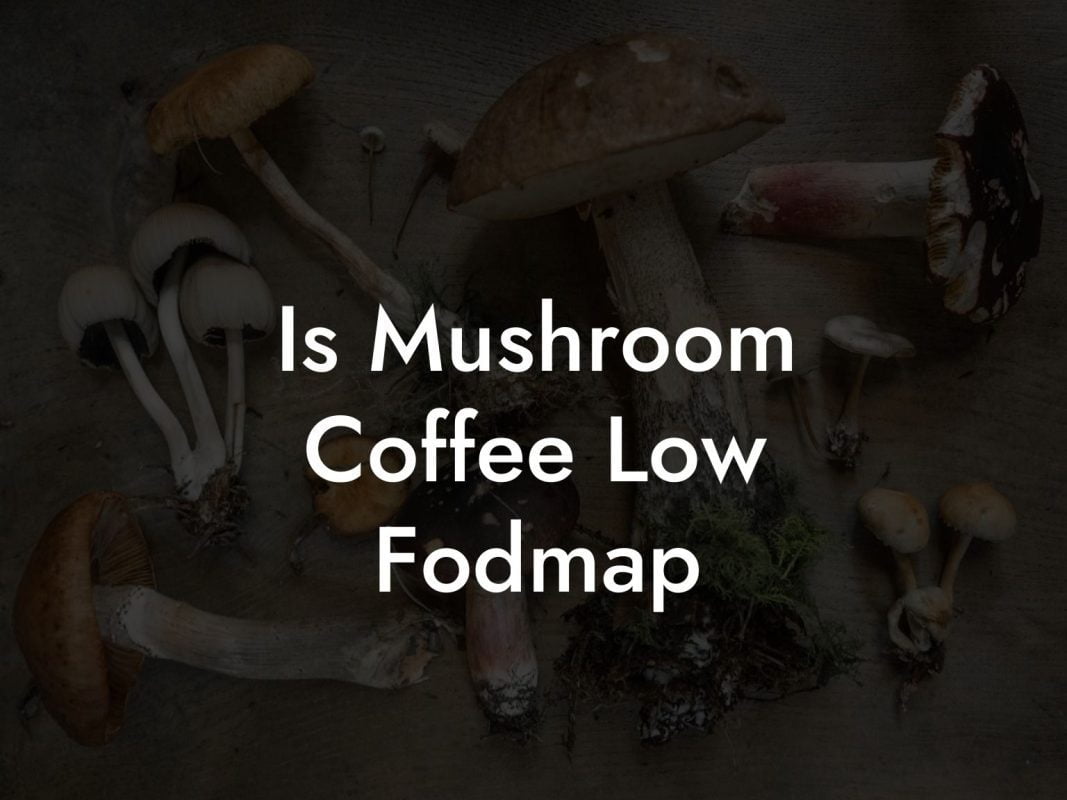Ever wondered if your leftover coffee grounds could double as a five-star spa retreat for Lion’s Mane mushrooms? It might sound like the setup for a hipster’s wild dream, combining your caffeine fix with some mystical mushroom magic, but trust us, there’s genius in this mashup. Let’s dive into the curious world of fungus farming on coffee grounds, where sustainability meets biohacking, and discover if Lion’s Mane mushrooms can really call your discarded coffee the perfect home.
Quick Links to Useful Sections
- Meet the Marvel: What Is Lion’s Mane Mushroom?
- Caffeinated Compost: The Allure of Coffee Grounds
- Will Lion’s Mane Grow on Coffee Grounds? Unpacking the Science and Myths
- The Nutritional Symphony: Coffee Grounds Meet Fungal Needs
- Step-by-Step: How to Cultivate Lion’s Mane on Coffee Grounds
- Step 1: Gather and Prepare Your Materials
- Step 2: Sterilize Your Coffee Grounds
- Step 3: Mix the Substrate
- Step 4: Inoculate with Lion’s Mane Spawn
- Step 5: Incubate
- Step 6: Fruiting
- Step 7: Harvest and Enjoy
- Mushroom Coffee 2.0: The Cultural Craze of Fungi-Fueled Brews
- Troubleshooting: Common Fungal Hiccups and How to Dodge Them
- Issue 1: Contamination Concerns
- Issue 2: pH Imbalance
- Issue 3: Inadequate Humidity
- Issue 4: Temperature Fluctuations
- Issue 5: Slow Colonization
- Scientific Insights: The Symbiotic Dance of Mycelium and Coffee Grounds
- Integrating Coffee Grounds into Your Fungi-Farming Routine
- Resources and Community Support: Your Next Steps
- Fusing Your Fungi Passion with a Modern Lifestyle
- FAQs: Your Burning Questions About Lion’s Mane on Coffee Grounds
- Your Next Step: Embrace the Fungal Adventure
Meet the Marvel: What Is Lion’s Mane Mushroom?
Lion’s Mane (Hericium erinaceus) isn’t your run-of-the-mill mushroom, it’s the shaggy, brain-boosting fungus that has been stealing the spotlight in both the culinary and wellness worlds. With its unique, cascading icicle-like spines and a taste that dances between seafood and nutty flavors, this mushroom has become a must-have in gourmet kitchens and holistic health circles alike.
Rich in antioxidants, beta-glucan polysaccharides, and compounds that might just fire up your cognitive prowess, Lion’s Mane has earned a reputation as a natural nootropic. Enthusiasts rave about its potential to improve concentration, nerve health, and even combat inflammation. Whether you’re a biohacker, a vegan foodie, or simply someone looking to add a little extra oomph to your coffee routine, Lion’s Mane promises an experience that’s both nourishing and intriguingly quirky.
Beyond its impressive health benefits, Lion’s Mane also carries an energetic vibe that aligns perfectly with sustainability trends. It’s the kind of superfood that hops onto the eco-friendly bandwagon, ready to redefine the art of mushroom cultivation in our urban jungles.
Caffeinated Compost: The Allure of Coffee Grounds
Let’s talk about the unsung hero of waste: coffee grounds. Every day, millions of cups of joe leave behind a trail of used coffee grounds that most people toss without a second thought. But here’s the twist – these grounds aren’t just bitter remnants; they’re a nutrient-rich substrate brimming with nitrogen, organic matter, and a pH level that might just be ideal for fungal growth.
Looking For The Best Mushroom Coffee? You'll Love These:
Urban gardeners and eco-warriors have repurposed these grounds for everything from soil amendment to pest repellent. The fact that coffee grounds are biodegradable, sustainably sourced, and readily available makes them an attractive option for anyone looking to recycle and reimagine their daily brew. And for the mushroom enthusiast, they might just be the secret ingredient to cultivating a thriving crop of Lion’s Mane.
In a world where sustainability is more than just a buzzword, using coffee grounds as a growing medium offers a unique, environmentally friendly twist. Not only do you reduce waste, but you also give your mushrooms a nutrient-dense bed that could potentially enhance growth and flavor. Who knew your morning ritual could be the starting line for a culinary revolution?
Will Lion’s Mane Grow on Coffee Grounds? Unpacking the Science and Myths
At its heart, the answer to whether Lion’s Mane can thrive on coffee grounds is a resounding “it depends.” The notion might initially sound like a quirky myth inspired by Pinterest DIY projects, but research and hobbyist experiments have shed some light on the matter. Coffee grounds, when used correctly, offer a substrate that balances organic nutrients with enough structure to support mycelium expansion.
However, it’s not as simple as dumping a heap of grounds in a bag and praying for fungal magic. Several factors, including moisture content, pH balance, and sterility, come into play. Coffee grounds are naturally acidic, so if you’re thinking of using them as your sole substrate, you might need to tweak the pH levels, like adding lime or mixing them with other materials, to create a more hospitable environment for Lion’s Mane mycelium.
Moreover, while coffee grounds are nutrient-rich, they can also harbor contaminants if not sterilized properly. So, yes, Lion’s Mane can grow on coffee grounds, but it may require a bit of an alchemical touch to get everything just right. Think of it as a culinary experiment where you’re both the chef and the scientist, mixing art with science to cultivate your very own mushroom masterpiece.
Ultimately, the success of using coffee grounds hinges on preparation, environmental control, and a bit of geeky persistence. Whether you’re a seasoned mycophile or a curious newbie, the journey from coffee to mushroom is as much a creative process as it is scientific.
The Nutritional Symphony: Coffee Grounds Meet Fungal Needs
To understand why coffee grounds might be a match made in fungal heaven, you’ll need to peek behind the scenes of what makes Lion’s Mane tick. The mycelium, the intricate network of fungal threads responsible for absorbing nutrients, requires a substrate that is rich in organic matter. Coffee grounds check many of these boxes, delivering nitrogen, trace minerals, and a fibrous structure that can be fine-tuned to encourage mycelium growth.
Think of coffee grounds as a multifaceted fertilizer: They not only act as a potential food source but also add a distinct texture that can help anchor the mushroom’s development. When mixed with other organic substrates like sawdust or straw, coffee grounds can help create a balanced nutrient profile that optimizes growth while maintaining moisture levels, a critical factor for successful cultivation.
However, cultivating Lion’s Mane on coffee grounds isn’t just a numbers game. It’s about crafting an environment that mimics nature’s process of decay and renewal. In the wild, fungi flourish in compost piles where decomposed plant material meets microbial magic. By harnessing coffee grounds, you essentially create a bespoke compost bed that recycles waste and, in turn, nurtures a burgeoning network of mycelium.
For the modern eco-conscious grower, this isn’t merely a method to propagate mushrooms, it’s a statement. It’s recycling, upcycling, and biohacking all rolled into one fascinating journey from your everyday coffee cup to an exquisite, edible work of art.
Step-by-Step: How to Cultivate Lion’s Mane on Coffee Grounds
Ready to roll up your sleeves and get your hands delightfully dirty? Here’s your detailed guide to turning humble coffee grounds into a thriving Lion’s Mane haven. Don’t worry if you’re new to mushroom cultivation, the process is as engaging as it is rewarding.
Step 1: Gather and Prepare Your Materials
The first step is assembling all your supplies. You’ll need:
- Fresh, used coffee grounds (ideally from organic coffee for fewer chemical residues)
- A secondary substrate like sawdust, straw, or cardboard to mix with the coffee grounds
- Lion’s Mane mushroom spawn (mycelium on sterilized grain work well)
- Sterile containers or grow bags
- Hydration tools like a spray bottle
- Optional: pH adjusters (lime or gypsum) if the acidity of your grounds needs balancing
Remember, a clean environment is key to preventing pesky contaminants, think of it as the mushroom version of keeping your iPhone screen smudge-free.
Step 2: Sterilize Your Coffee Grounds
Since coffee grounds can be a breeding ground for unwanted bacteria and molds, pasteurization is essential. Spread your used coffee grounds on a baking tray and let them dry out for a few hours or lightly heat them in an oven at a low temperature (~200°F) for 20-30 minutes. This isn’t a full sterilization process like you’d do for spores, but it can reduce the risk of contaminants.
If you’re a perfectionist with a lab mindset, consider pressure sterilizing your substrate, though this is usually overkill for a home-based project.
Step 3: Mix the Substrate
Combine the cooled, pasteurized coffee grounds with your chosen secondary substrate. The ratio isn’t set in stone, a mix of 50:50 is a great start. This blend not only balances the nutrient load but also improves the structure of the substrate, allowing the Lion’s Mane mycelium to penetrate and colonize more effectively.
Add a little water if necessary to achieve a moist, sponge-like consistency. The substrate should be damp enough to clump in your hand without dripping, ensuring optimal hydration for fungal growth.
Step 4: Inoculate with Lion’s Mane Spawn
Gently fold in the Lion’s Mane spawn into your substrate. Make sure everything is evenly mixed without disturbing the sterility too much. Use gloves and sanitized tools, channeling your inner germaphobe, after all, we want the good fungi to win!
Once mixed, transfer your blend into clean grow bags or containers, and seal them loosely to allow some air exchange while keeping contaminants at bay.
Step 5: Incubate
Place your inoculated substrate in a warm, dark, and humid environment (ideally between 65-75°F). The incubation period typically lasts anywhere from two to three weeks, during which the mycelium will spread its roots throughout the substrate.
Keep an eye on your setup and occasionally mist lightly with water if things start to dry out. This is the time for patience and occasional happy dance moments as you watch your future Lion’s Mane colony slowly come to life.
Step 6: Fruiting
Once your substrate is fully colonized, it’s time for the grand performance, the fruiting stage. Move your bag or container to a location with indirect light and fresh air. Slightly increase the humidity (a simple DIY humidifier or regular misting works wonders) to coax the mushroom buds into forming.
Over the next several days to a couple of weeks, you should start seeing small, icicle-like formations emerging. These soft, white primordia will eventually develop into the magnificent Lion’s Mane mushrooms, just waiting to delight your taste buds and fuel your next biohacking session.
Step 7: Harvest and Enjoy
When your Lion’s Mane mushrooms are fully developed, usually when the spines are long and tufts start drooping, gently harvest them by cutting at the base. Enjoy them fresh, add them to your mushroom coffee recipes, or even dehydrate for later use. The possibilities are as limitless as your imagination!
And there you have it, a step-by-step guide to transform your mundane coffee waste into a bountiful harvest of brain-boosting Lion’s Mane mushrooms. Experiment, adjust, and share your successes (and failures) with fellow urban mycologists!
Mushroom Coffee 2.0: The Cultural Craze of Fungi-Fueled Brews
If the idea of combining coffee and mushrooms doesn’t already have you buzzing with excitement, welcome to the new frontier of Mushroom Coffee 2.0, where biohacking meets barista artistry. Millennials and Gen Z alike are embracing alternative ways to optimize their daily routines, and what’s more Instagram-worthy than a shot of Lion’s Mane-infused brew?
Beyond its striking visual appeal, mushroom coffee brings together the best of both worlds, caffeine-fueled energy with the adaptogenic and neuroprotective properties of medicinal mushrooms. Integrating Lion’s Mane into your coffee isn’t just a trend; it’s a lifestyle move, a subtle nod to sustainability and well-being.
Whether you’re looking to stay focused during those long study sessions or need a creative kick-start on a sluggish afternoon, mushroom coffee is quickly becoming the go-to solution. And with many artisanal roasters and small-batch growers touting these innovative brews, you’re not just sipping coffee, you’re part of a dynamic community that’s redefining wellness, one fungus at a time.
Troubleshooting: Common Fungal Hiccups and How to Dodge Them
Like any experimental garden, your journey with cultivating Lion’s Mane on coffee grounds might hit a few snags. Before you panic or toss your substrate in despair, here are some common fungal hiccups and practical tips to overcome them.
Issue 1: Contamination Concerns
One of the most common challenges when using coffee grounds is the risk of contamination. If your substrate looks moldy, smells off, or has discolored patches, it might be time to re-evaluate your sterilization techniques. Make sure you’re pasteurizing the coffee grounds properly and maintaining a clean workspace. If contamination does appear, gently remove the affected areas before the mycelium spreads further.
Issue 2: pH Imbalance
Coffee grounds are naturally acidic. While a bit of acidity is okay, too much can stifle mycelial growth. Keep an eye on your substrate’s pH balance and consider mixing in some alkaline materials or lime if needed. Regular testing can save you a lot of headaches later on.
Issue 3: Inadequate Humidity
Fungi are moisture mavens. Too little humidity, and your mycelium might dry out or fail to properly colonize the substrate. Too much humidity, and you risk mold growth. Aim for that sweet spot of a damp, spongy substrate, and don’t be afraid to mist regularly during both incubation and fruiting stages.
Issue 4: Temperature Fluctuations
Temperature plays a crucial role in fungal development. Sudden drops or spikes can stress the mycelium, leading to poor growth. Keep your growing area in a consistently warm environment to ensure that your Lion’s Mane mushrooms flourish.
Issue 5: Slow Colonization
Patience is key in the world of mushroom cultivation. If your mycelium seems to be moving at a snail’s pace, check the moisture and temperature conditions first. Sometimes a slight adjustment or simply giving it more time is all that’s needed for a breakthrough.
Remember, every mycologist, amateur or expert, faces challenges from time to time. Embrace these moments as learning opportunities, and don’t hesitate to tap into forums and communities online for advice and support.
Scientific Insights: The Symbiotic Dance of Mycelium and Coffee Grounds
Behind the scenes of every successful mushroom harvest is a fascinating interaction between the mycelium and its substrate. Researchers have discovered that coffee grounds, with their abundant organic compounds, present a viable option for fungal growth when properly managed. The mycelium’s enzymes break down complex compounds in the grounds, recycling them to release nutrients that fuel its expansion.
Studies suggest that the caffeine content in coffee may actually stimulate fungal activity in small doses, though the evidence is still emerging. The interplay of microbial life in composted coffee grounds further enhances the substrate’s ability to support a rich network of mycelial strands. In essence, you’re not just recycling waste, you’re nurturing a micro-ecosystem that transforms spent coffee into fertile ground for mental and physical vitality (and a stellar cup of mushrooms-infused coffee, too).
These scientific insights not only validate the experimental methods of community growers but also open up exciting possibilities for future research. As sustainable cultivation becomes more mainstream, innovations like these could revolutionize the way we think about food production and waste management, one cup of coffee at a time.
Integrating Coffee Grounds into Your Fungi-Farming Routine
Incorporating coffee grounds into your regular mushroom cultivation regimen can feel like the ultimate hack for a busy urban lifestyle. It’s the perfect blend of sustainability, cost-effectiveness, and creative gardening, a trifecta that resonates with eco-conscious Gen Zers and millennials alike.
To get the most out of your coffee-based substrate, consider keeping a dedicated journal where you track key metrics such as temperature, humidity, and pH levels. Experiment with different blends, perhaps a mix of coffee grounds with coconut coir or hardwood sawdust, to see what yields the best fruiting. Documenting your progress not only helps refine your technique but also allows you to share tips with an enthusiastic community of fellow mushroom aficionados.
For many, the process is as much about the journey as it is about the final harvest. Think of it as a creative, eco-friendly art project where every batch of coffee grounds becomes the canvas for your next mushroom masterpiece. And if you ever hit a snag, remember: the best breakthroughs often come after a few funny mishaps. So grab your coffee, don your gardening gloves, and let your inner mycologist take the reins!
Resources and Community Support: Your Next Steps
Venturing into the realm of coffee-ground mushroom cultivation might seem daunting at first, but you’re not on this journey alone. The mycology community is vibrant, diverse, and ready to share tips, troubleshooting advice, and success stories. From online forums and social media groups to local workshops and sustainable agriculture meetups, there’s a wealth of resources waiting to help you perfect your craft.
Some popular resources to kickstart your adventure include:
- Myco Supply websites offering specialized mushroom spawn and substrates
- YouTube channels dedicated to urban farming, home mycology experiments, and DIY mushroom cultivation
- Reddit communities like r/mycology and r/mushroomgrowers where you can ask questions and share your progress
- Local community gardens or urban farming groups where sustainability and eco-innovation are celebrated
- Books and e-guides on mushroom cultivation and sustainable agriculture practices
Engaging with these communities not only bolsters your technical know-how but also connects you with like-minded individuals who share your passion for innovation, wellness, and environmental stewardship. Whether you’re trading tips on substrate mixtures or swapping success stories after a particularly bountiful harvest, every interaction adds a new layer to your journey.
So, if you’re ready to transform those coffee grounds into a powerhouse of Lion’s Mane magic, start by reaching out, learning from others, and embracing the collective wisdom of the mushroom-loving community. Your next big breakthrough might just be a message or a forum post away!
Fusing Your Fungi Passion with a Modern Lifestyle
The fusion of traditional cultivation techniques with innovative sustainability practices has given rise to a movement that’s as trendy as it is transformative. Imagine starting your day with a cup of mushroom coffee, knowing that not only are you fueling your body with potent nootropics, but you’re also contributing to a greener, waste-free lifestyle.
This modern approach to health and wellness resonates deeply with those who seek alternatives that are both effective and environmentally responsible. By engaging in practices like cultivating Lion’s Mane on coffee grounds, you’re not just following a trend, you’re participating in a revolution that redefines how we perceive food, waste, and the intricate balance of nature.
Embrace your inner sustainability advocate, experiment with your substrates, and share your creative ventures with a community that values innovation, humor, and authenticity. With every batch you grow, you’re joining the ranks of forward-thinking individuals who know that the future is organic, resourceful, and delightfully out-of-the-box.
FAQs: Your Burning Questions About Lion’s Mane on Coffee Grounds
Here are some of the most frequently asked questions about cultivating Lion’s Mane mushrooms on coffee grounds, answered in plain, relatable language:
1. Can Lion’s Mane mushrooms truly grow on coffee grounds?
Yes, Lion’s Mane can grow on coffee grounds, although they often work best when mixed with a secondary substrate like sawdust or straw. The key is adjusting the moisture and pH levels to create a friendly environment for the mycelium.
2. Do I need to worry about the acidity level in coffee grounds?
Coffee grounds are naturally acidic. You might need to neutralize the substrate slightly by adding an alkaline component such as lime, especially if you’re using coffee grounds as a major part of your mix.
3. How do I prevent contamination when using coffee grounds?
Cleanliness is key! Pasteurize or lightly sterilize your coffee grounds and work in a well-sanitized area. Use clean tools and maintain proper humidity and temperature to keep unwanted microorganisms at bay.
4. Is it necessary to combine coffee grounds with another substrate?
While it is possible to experiment with pure coffee grounds, mixing them with other substrates like sawdust or straw provides a better structure and a more balanced nutritional profile for the mycelium.
5. How long does it take for Lion’s Mane to begin fruiting on a coffee substrate?
Typically, you can expect the mycelium to colonize the substrate in about two to three weeks, with fruiting occurring shortly after. However, environmental conditions and substrate composition can influence the timeline.
6. Does the caffeine content affect the mushrooms?
In small amounts, caffeine doesn’t seem to hinder growth. Some growers even speculate that it might provide a slight stimulatory effect on the mycelium, though more research is needed to confirm this.
7. Can I use spent coffee grounds from any coffee shop?
It’s best to use organic or freshly-brewed coffee grounds if possible, as some commercial varieties might contain additives or residues that could interfere with mycelial development.
8. What are the benefits of growing Lion’s Mane on coffee grounds?
Beyond recycling waste, you get a nutrient-rich substrate that can lead to robust mycelium growth. It’s sustainable, eco-friendly, and connects you with cutting-edge biohacking trends.
9. Is mushroom coffee really different from regular coffee?
Absolutely! Mushroom coffee blends traditional caffeine with the health-promoting properties of medicinal mushrooms like Lion’s Mane, offering cognitive and immune benefits in addition to your usual energy boost.
10. Can I set up this cultivation process at home without professional equipment?
Yes, many home growers have successfully grown Lion’s Mane using simple, accessible tools. With a bit of research, patience, and attention to hygiene, you can create your own mini mushroom farm right in your kitchen or garage.
Your Next Step: Embrace the Fungal Adventure
Whether you’re drawn to the eco-friendly allure of repurposing coffee grounds or the innovative benefits of Lion’s Mane, this journey is as much about creativity and sustainability as it is about health. Every bag of coffee grounds holds the promise of transformation, a hidden potential waiting to be unlocked by your curiosity, ingenuity, and willingness to experiment.
As you embark on this mycological adventure, remember that every challenge is an opportunity to learn, every experiment brings you closer to expertise, and every harvest is a celebration of nature’s resilience and your own resourcefulness.
So, grab that bag of coffee grounds, fire up your green thumb, and dive into the wild world of Lion’s Mane cultivation. In a time when sustainability meets modern living, your small experiment could spark the next big trend in mushroom coffee arts, combining innovation, health, and a little bit of magic.
Happy cultivating, and may your Lion’s Mane mushrooms thrive as wildly as your ambition!
Looking For The Best Mushroom Coffee? You'll Love These:
Useful Interruption: Dive deeper into the world of Mushroom Coffee with our most popular sections. If there is anything you think is missing or anything you would love for us to write about, just give us a shout.
- Mushroom Coffee Equipment & Product Reviews
- Mushroom Coffee Recipes & Creative Variations
- Mushroom Coffee Guides & Troubleshooting
- Mushroom Coffee Brewing & Preparation Techniques
- Model Rocket Advanced Rocketry & Innovations
- Mushroom Coffee Fundamentals
- Model Rocket Equipment Reviews & Digital Tools
- Mushroom Coffee Health Benefits & Wellness
- Mushroom Coffee Mycology & Scientific Insights
- Mushroom Coffee Community, Lifestyle & Engagement
I tried mushroom coffee this morning and told my friend, "This brew is spore-tacular!" He shot back, "Guess that's why it's such a cap-tivating way to kickstart your day!"


